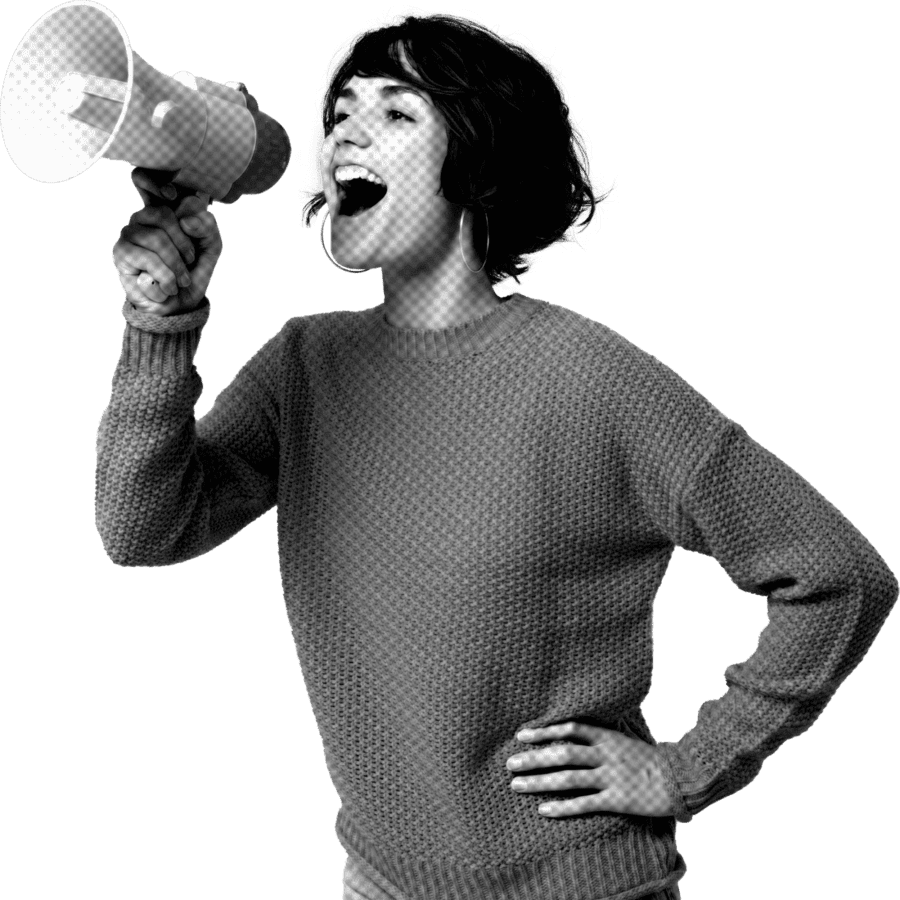Work and life, in general, can be challenging at the best of times. So, navigating all life has to offer with hidden disabilities is a minefield of gargantuan proportions. Over the last decade, more has been done by brands and organisations to address the imbalance experienced by those of us with disabilities – but there is still a chasm to cross. In this article, I explore some of my history with diagnosis, acceptance and living with hidden disabilities, as a female founder and creative consultant.
Though my experience below refers more to my time as an employee, what I learned has informed how I work with others in my own business. I share those insights with brands and organisations who truly want to see, understand and include us.
One of the earliest memories I have is of being at my Grandma’s house and being very sick. My aunt had moved one of the armchairs, so that I could sit closer to the bucket that would capture what my stomach was expelling. I felt awful and thought the unease would never go away.
As I got older, I recognised that I did seem to be more ill, more often, than my peers. I would need to take days off for pain, sickness, lethargy and all sorts, but – I’d not been diagnosed with anything that could explain why I was perpetually ‘under the weather’. The answers I received sounded like ‘it’s just period pains’ (it was in fact, nothing to do with my periods), ‘your pain threshold must be very low’, and ‘you’ve got to push through’. So that’s what I learned to do. I minimised my pain (as did the professionals), hid my sickness and struggled on, desperate to feel ‘normal’.
By 2004, I’d learnt the term ‘hidden disabilities’ but was still unaware that this term included me. I’d spent years travelling to work, being sick on the underground, hiding under my desk when the pain was too much to bear and I couldn’t leave. I worked at a big global health charity in the Communications team, so was ‘lucky’ enough to work with nurses who saw how unwell I was and supported me through it by trying to help me figure out exactly what was wrong. One, who came to a GP appointment with me, was horrified when she observed how I was treated.
She saw my pain and sickness daily, but the doctor dismissed my explanations, telling me it was just a kidney infection and leaving me distraught. My whole-body symptoms were baffling and could not be so easily explained away – but they were, time and time again.
In the end, it turned out that the decades’ of dismissal of my then-treatable conditions caused issues that truly became permanent disabilities. Had I been ‘seen’ earlier, supported sooner, I may not be in the irreversible position I am in now but, alas, I am indeed one of millions who are described as officially having hidden disabilities.

Navigating Work with a Hidden Disability
Throughout it all, I worked for companies who, despite their forward-facing role in society being that of caring organisations, did not have the inward capacity to deal with the unknown and to support me through my trials. There were managers who noted down when I should be on my period so that they could dispute my claims of pops and gushes on my way to work. There were colleagues who took credit for work I had done, because it was easy to believe the sick girl probably hadn’t done much. I was referred to Occupational Health many times and was asked to prove something I had no proof for.
Companies were not yet equipped for complicated, complex hidden needs and it showed.
I’m not the only person with stories like this. The workforce is filled with people who, like me, had things wrong that were just plain invisible and sometimes incomprehensible.
The world got better at understanding the term, hidden disabilities – a title which encompasses a wide range of physical, mental and neurological conditions that significantly affect a person’s lived experience, but that aren’t immediately noticeable.
Conditions like, chronic illnesses (i.e. fibromyalgia, lupus or Crohn’s disease); mental health conditions (i.e. anxiety, depression or bipolar disorder); learning disabilities (i.e. dyslexia or ADHD); neurological disorders (i.e. epilepsy or multiple sclerosis); sensory impairments (i.e. hearing loss or visual impairment) and many more.
Companies had lists that told them what to include but were dependent on managers and colleagues who did not buy into the devastating impact of a condition they could not verify. And there was still little understanding of how day-to-day living was affecting those who had to manage multiple conditions, plus the stigma that followed.
‘Yes, Shae.’ I hear you say. ‘We’re in 2024 now. That must have changed.’ You’re right, some things have changed, but there is still work to be done.
Before I share what I have learned about what companies and brands can do to better support their employees with additional needs, let me be clear about why this matters.
Why is it Important to Understand Hidden Disabilities?
One of the biggest challenges we face as people with hidden disabilities is a lack of understanding and support. Because our conditions are not outwardly visible, we often encounter scepticism or a lack of empathy when requesting accommodations, asking for time off or when explaining our infrequent struggles to meet certain expectations.
The lack of visibility can lead to misunderstandings or unfair assumptions. Those of us who live with chronic pain or a mental health condition, may be perceived as lazy or unreliable if we take frequent breaks or request flexible hours. This can create a toxic environment where we feel pressured as employees to push through our symptoms without asking for help, potentially exacerbating our conditions.
There really is work to be done. So, how can organisations take a positive lead in making accommodations in a safe work environment for those of us described above?
What Can Companies Do to Support Employees with Hidden Disabilities?
Foster a Culture of Openness and Empathy
We shouldn’t have to share all of our health secrets and woes, but, if we do, leaders should be trained to know how not to reject that vulnerability by minimising or comparing. Normalise discussions around disabilities, both visible and invisible. Make room for open conversations about mental health, chronic illness and neurodiversity, to reduce the stigma surrounding them.
Offer Flexible Work Arrangements
For many people with hidden disabilities, traditional work schedules may not be sustainable. Consider offering the ability to work remotely or adjust start and end times. This allows us to manage our symptoms without compromising our productivity.
The pandemic demonstrated how flexible work environments can be beneficial to all. Continuing to offer these options can reduce stress for colleagues with hidden conditions.
Provide Reasonable Accommodations
This includes:
- Adjusted workspaces, such as ergonomic chairs or standing desks
- Extended deadlines or adjusted workloads during flare-ups or mental health crises
- Access to quiet spaces for employees with sensory sensitivities
- The ability to take breaks as needed throughout the day
Accommodations should be seen as part of the company’s commitment to inclusivity, rather than as burdensome exceptions.
What Can Brands Do to Support Those with Hidden Disabilities?
Brands have a role to play too:
Represent Hidden Disabilities Authentically
It’s essential to authentically include those with hidden conditions in branding and programming! We can help you with the how. While visible disabilities are sometimes represented in media and advertising, hidden ones are often left out of the narrative. It adds to the feeling of not being seen.
Include Stories and Lived Experiences
One of the most powerful ways to represent us is by sharing real stories from people like us who live with these conditions. By collaborating with us, like Purple Goat have done for this article, giving us the chance to create content, brands can give a voice to a community that is often overlooked. Remember though to avoid tokenism, stereotyping and misrepresentations. Instead, brands should focus on meaningful engagement and authentic representation.
Collaborate with Disability Advocates
To ensure authenticity, brands should collaborate with disability advocates and organisations. You don’t have to know it all yourself. There are specialists out there, like Purple Goat. They can provide insight, guidance and feedback on how to best represent people like us. Engaging with our community directly also helps to build trust and shows a genuine commitment to inclusion.

Conclusion
If the role seems insurmountable, think about this, hidden disabilities affect millions of us worldwide, yet we remain underrepresented in conversations about diversity and inclusion. Companies and brands have a significant role to play in supporting and representing us.
For businesses, fostering a culture of openness, providing reasonable accommodations and training staff on disability awareness, are crucial steps toward building an inclusive workplace. For brands, authentically representing hidden disabilities in media and marketing campaigns can help reduce the stigma and create a more accepting world.
Ultimately, understanding and supporting people with hidden disabilities creates more compassionate workplaces and a more inclusive society.




